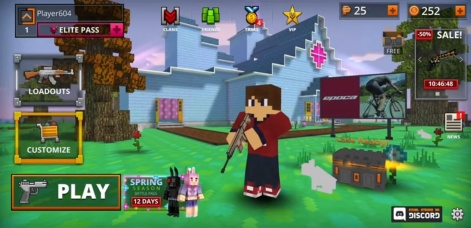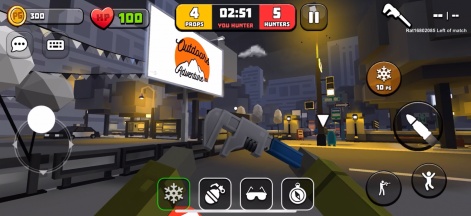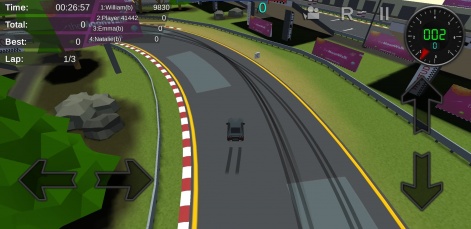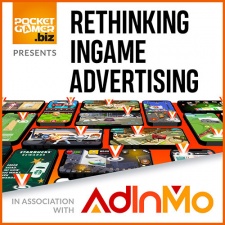Advertising has long been a mainstay monetisation strategy for free-to-play mobile games. But if we’re all being honest, it has never really been ‘a round peg, round hole’ solution - always impacting the player experience, irritating developers and players alike and rarely seen as a premium media channel by advertisers.
It is therefore unsurprising that non-interruptive in-game advertising formats are getting a lot of attention. PocketGamer's annual industry survey found that 43.6 per cent of developers thought these native formats as a key opportunity for monetising in 2021. And this year has seen a leap in the adoption of the format with lots of trials and integrations. The channel is scaling and developers need to be rethinking their in-game ad monetisation strategies.
AdInMo’s philosophy is all about ‘keeping players happy’.
The consumer demand to shake up how to monetise mobile games is clear in a recent consumer survey with 70 per cent of players preferring InGamePlay ads, which offer a smoother gaming experience compared to traditional banners and interstitials.
With InGamePlay, placements are built directly into the game, giving you full control over when and where players will encounter the ads. It’s about working with the game design not changing the game flow or interrupting the player experience. The ultimate goal is to enhance gameplay as well as drive incremental monetisation.
But how do you blend creativity and player immersion to strike a happy balance between revenue generation, a good game (and brand) experience?
AdInMo has a dedicated in-house design team and their mantra is: placing InGamePlay ads is both an art and a science.
SDK integration takes a matter of minutes, but the keys to unlocking the best monetisation and optimal player retention are good technical knowledge of the systems that work under the hood, as well as considering the artistic side of the game as an overall experience.
InGamePlay works with all game genres, but the ‘how, when and where’ will of course differ from game to game. Here are five top tips from AdInMo’s design team to help balance technical and creative considerations to effectively achieve strong revenue while not compromising game appeal.
Technical Tips
1) Place ads where players spend the most time

InGamePlay ads don’t have a 'click', so campaigns are all about brand awareness. And for advertisers, a key metric is therefore good old fashion ‘eyeballs’: How many people saw the brand and crucially how long was the ad viewed? AdInMo reports campaigns in brand interaction minutes and so the longer an ad is on screen, the more impressions it generates and the more money is made.
But don’t fall into the very ad-bombing trap you’re trying to escape. Placing ads in areas where players have to spend a lot of time e.g. shop/character customisation screens, equipment management screens and central hubs is a key tip to help rack up the impressions while keeping placements authentic. YouTube tutorial.
2) Consider the angle the player will be approaching from

In games where players have freedom of movement in an open space and in certain 2D games such as platformers or idle games, where you can move left and right or zoom/pan in the play area, it’s essential to consider the angle the player will approach from.
While the ad may take up sufficient screen time and space to create a valid impression when viewing it in-engine, the varying angles from which the player can approach could nullify one of these requirements.
To help mitigate this, play-test your ads and use AdInMo’s debugging and impression checking tools to help tweak size and location. YouTube tutorial.
3) Take advantage of static screens
Games where the camera remains fixed and the same objects remain on screen for a long time are ideal for InGamePlay. For example, in single-screen puzzles or combat screens in an auto-battler, any ads placed will be visible for the entire duration of play. YouTube tutorial.
Artistic considerations
4) Consider the game world

The oldest form of advertising dates back to when humans lived in caves and created wall art to show their artistic talent to influence the audience through a social approach.
Nothing has changed. Players expect to see ads, as long as they are appropriately placed.
To ensure that InGamePlay ads blend seamlessly into your game in a way that's natural and doesn’t disrupt the player experience, you need to consider the world. The actual physical location or time period in which your game takes place.
For example, in games with an urban setting, ads on billboards on the sides of buildings make a lot of sense, while in racing and sports games, having generic ads alongside the track or playing area is a natural fit. Not to mention, swapping those placeholder fake ads out with InGamePlay ads is a great way of generating new revenue. YouTube tutorial.
5) Make use of background layers
Although a game’s background layers help to provide aesthetic context for your game, in most cases they have no impact on the core gameplay. This makes them the ideal canvas for InGamePlay ads.
Menu screen backgrounds, building walls and the dressed-up boundary boxes of a game world are all good examples of where to place ads authentically. Additionally, as these ads only appear in the background layer, they don’t interfere with any functionality, leaving the player to play the game as they normally would. YouTube tutorial.
For more details, download AdInMo’s Design Integration Guide or check out their YouTube channel for in-live implementation of these tips and examples of games getting the InGamePlay balance right.
Our Rethinking In-Game Advertising Month is brought to you in association with AdInMo
AdInMo’s InGamePlay brand advertising platform serves click-free ads that don’t interrupt gameplay. Programmatically delivered native ad placements drive incremental monetisation for developers with no impact on player retention.
AdInMo’s SDK works for all mobile game genres creating authentic brand experiences that keep players happy. Watch our InGamePlay review series and design integration video tips here to check out how best to place ads in your game, drive new revenue and keep your players happy.
Download our SDK now (no sign up required) and start rethinking your InGame Advertising strategy today.






















